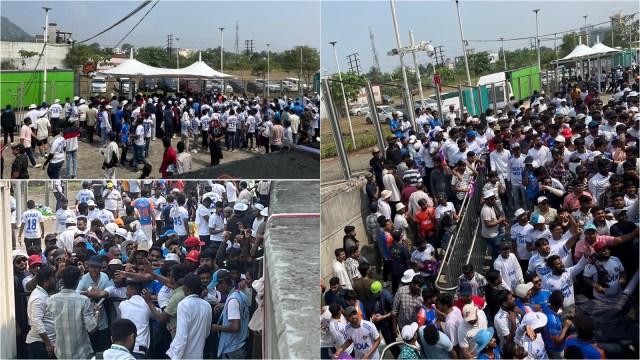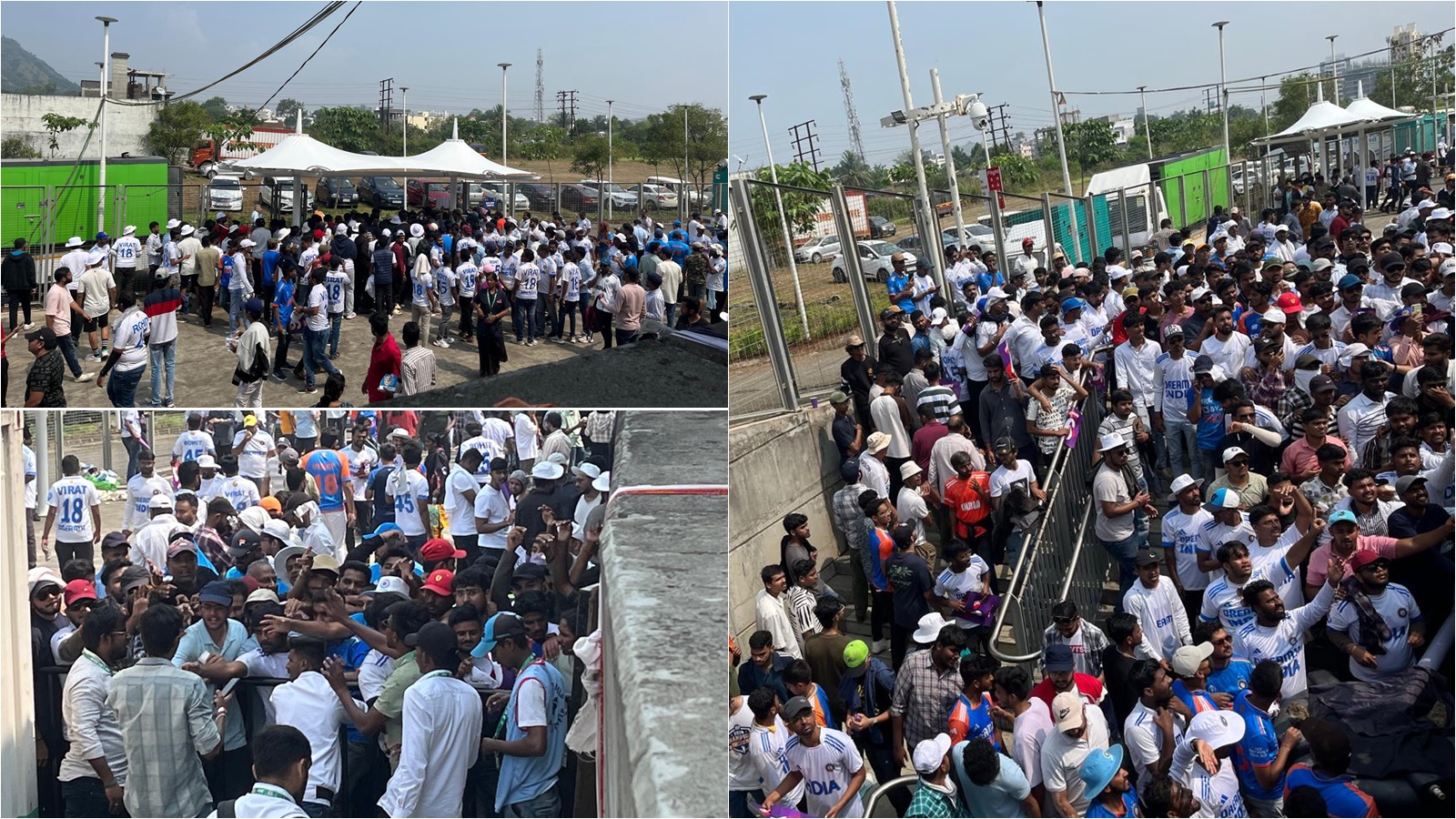
A total of 17,798 turned up to watch the first day at the Maharashtra Cricket Association Stadium. It’s a sizeable number considering it was a Test match, the supposedly waning form of cricket, the venue was 30 kilometres from the city centre, difficult to access unless one had a vehicle, there were a tangle of alleys and diversions with no signages – a wrong turn could take you halfway to Mumbai.
There was dust to make Delhi summers blush, traffic to make Bengaluru laugh and vehicular chaos that would shame the daredevilry on wheels one finds in Kanpur. And inside the stadium, they had to suffer unclean toilets and lack of drinking water. Yet, no one left the stadium
Like pilgrims flocking to watch their deities, they converged to watch the game. Even from 10 miles away, excitement bubbled, the usual sights of jerseys being sold and faces being smeared with the colours of the flag emerged. The narrow lanes choked with spectators. Those reliant on public transport ended up walking a couple of kilometres from the nearest bus stop to the entrance of the stadium, past sprouting high rises.
The arena pounces from nowhere. The construction is elegant, the hilly outlines in the backdrop strike a pleasant view. But when one steps into the cricket shrine, it turns out to be like most other pilgrimage centres. There were just a handful of rest-rooms. After the first session, they piled up on the stairs that led to the dungeon that is the toilet. Some of them complained there was no water, and the stench would hit the nostrils from a fair distance.
There was also a shortage of drinking water, especially in the North Stand. The water supply kiosk ran out of water. The prices at the stalls were inflated. In certain sections of the stadium, stores ran out of mineral water bottles too. Perhaps they didn’t anticipate the crowd-surge and hadn’t stockped up.
So they thronged the barricade near the media box and yelled for water and chanted: “MCA, MCA, give us some water.” By this time, the mercury and humidity too had soared and the fans ran helter-skelter for water. Some badgered the security near the turnstiles to let them outside so that they could buy water from the stores outside the stadium.
But when a spectator exits, they cannot re-enter. The guards remained adamant too.
Some of the volunteers in the media and broadcast enclosure flung bottles of water, which they leapt and jumped to catch. Still, there were thousands waving their hands for water. Yet, no one left the arena. Whether they could grab a bottle of water or not, they hurried back to their seats when action resumed.
Later, MCA secretary Kamlesh Pisal promised more water stalls in the stands from the second day. “I sincerely apologise to all the fans for the inconvenience caused, especially due to water shortage. We have already addressed it and I assure you that from tomorrow until the end of the game, free drinking water will be supplied in every stand without any problem,” he said.
“The MCA has not authorised anyone to sell water, so we are getting to the bottom of the issue. And the supply at two or three points in the North Stand was interrupted since the MCA tried to serve chilled water to spectators considering the October heat. Once the water in cool cages finished, we tried to refill it with cold water, and in that process, it got delayed. We have done a recce and will make sure everything is refilled properly tonight to avoid such situations.”
Such a healthy attendance could provoke the argument that the speculation about the death of Test cricket is grossly exaggerated. It was not the case, it was just that the deification of cricketers has soared to inexorable levels. And the devotees won’t mind toilets that stink, dearth of drinking water, the chaos on the road, the heat, dust and humidity, or stands (half of the stadium) without canopies. These are but a small price that Indian cricket fans pay to watch their favourite cricketers.



